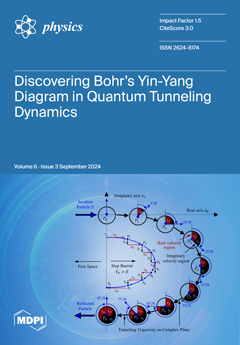The elastic and inelastic scattering of deuterons on
10B nuclei and the
10B(
d,
t)
9B reaction were studied at a deuteron energy of 14.5 MeV. In inelastic scattering, differential cross-sections for transitions to
10B states at
[...] Read more.
The elastic and inelastic scattering of deuterons on
10B nuclei and the
10B(
d,
t)
9B reaction were studied at a deuteron energy of 14.5 MeV. In inelastic scattering, differential cross-sections for transitions to
10B states at excitation energies,
Ex, of 0.718 MeV (1
+), 2.154 MeV (1
+), and 3.59 MeV (2
+) were measured. The cross-sections of the (
d,
t) reaction were measured for the ground (3/2
−) and excited states of the
9B nucleus at
Ex = 2.361 MeV (5/2
−) and 2.79 MeV (5/2
+). An analysis of the corresponding angular distributions was carried out using the coupled channel method. As a result of the calculations, the values of the quadrupole deformation parameters (β
2 ≈ 0.7 ± 0.1) for various transitions in the
10B nucleus in inelastic scattering were extracted. From the analysis of the (
d,
t) reaction, the values of spectroscopic amplitudes (
SA = 0.67 and
SA = 0.94) for transitions to the states of the
9B nucleus were extracted. The results obtained here, taking into account possible measurement errors, are in good agreement with the previously obtained data and the theoretical predictions.
Full article





